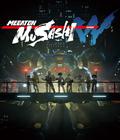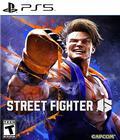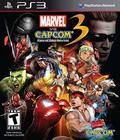Marvel vs. Capcom 2 is perhaps one of the longest-lasting fighting games on the market. Initially released in 2000, the game has been played on a competitive level for the past 10 years. This is partially due to the wide and varied character roster. It's also due to the game being a weird mix of unusual and sometimes broken mechanics that congealed into something with more depth than one expected from a crossover game. Even if you didn't follow the competitive Marvel vs. Capcom scene, it's tough to deny the fun of picking your favorite Capcom or Marvel character and witnessing the crazy combos and lightshows that emerged. As the follow-up to one of the most successful fighting games of all time, Marvel vs. Capcom 3: Fate of Two Worlds has big shoes to fill.
Marvel vs. Capcom 3 has a basic premise: Villains from the Marvel and Capcom universes have teamed up to take over both worlds, and the good guys must stop them. The plot is a paper-thin excuse to have Marvel and Capcom characters beat the crap out of one another, but there are many fun tie-ins for fans. Game mechanics and small touches, such as pre-fight conversations, make the characters feel like their in-universe counterparts. It adds a lot of personality to the game to hear Tony Stark and Captain America snipe at each other about the events of Marvel's Civil War or demon-hunter Dante promise to take down evil demon Dormamu. Each character even has an individual ending that features cameos from Marvel and Capcom favorites who didn't make it into the game.
As far as fighting games go, MvC 3 is very easy to pick up and play, and the controls are very simple. You have three basic buttons — light, medium and heavy — and each performs an attack that can be easily combined with another attack. You have three characters in your team, and each can be summoned or switched at will. Tapping the Partner 1 or Partner 2 button summons one of the other characters to perform a special attack, and holding the button switches to that character. This lets an injured character regenerate some lost red health and lets you alter tactics. The only downside is that switching and assists are very vulnerable. A partner character takes extra damage from attacks, so if you time your assist incorrectly, you can lose two characters to an enemy attack instead of one.
The Special attack button is an unusual addition. When used on the ground, it causes your character to execute a launcher that knocks the enemy into the air. You can follow up with a jump to create an extended air combo on your opponent. If used in the air, you'll execute a team aerial combo, which summons one of your other characters onto the field to attack. Depending on the direction you're pressing when you tap the Special button, you'll do a few different kinds of moves. The catch is that your opponent can counter your attack; if he presses X and a direction at the same time as you do, he'll counter the combo and knock you away.
Special moves are performed by using simple stick motions and one of the attack buttons. The inputs in MvC 3 were easy to pull off. Most use the simple down-diagonal-forward "fireball" motion in conjunction with an attack button. Depending on the character and attack, different button strengths can unleash variations on the attack or completely different attacks altogether. It takes some getting used to, but once you do, it's easy to pull off any move in your arsenal. For example, Dante has about 40 different special moves, but since the button motions are so simple and they can combo into one another, pulling off the correct move takes no effort at all. Even the meter-using Hyper Combo attacks are a breeze; like the regular moves, they utilize simple motions but require two attack buttons instead of one. It takes a lot to learn when and where to use moves, but even fighting game novices should be able to easily perform special moves.
Another new mechanic is the X-Factor. Once per match, players can press all four attack buttons to activate X-Factor, which instantly cancels the current attack and causes the character to be surrounded by a glowing red aura. While in X-Factor mode, characters are faster, stronger and recover red health. The duration and quality of the X-Factor is determined by the number of remaining characters on your team. Using it while you have all three team members leads to a weaker X-Factor. If you use it when you're down to one character, he becomes a powerhouse. It's difficult to say if X-Factor is a benefit. Giving the player a once-a-game chance to cancel a move and do extra damage adds extra strategy to the gameplay and forces you to figure out when to burn your X-Factor or how to make your opponent burn his. On the other hand, it can be annoying when you end up against a level 3 X-Factored Sentinel or Hulk, who does so much extra damage that it's almost comical and can turn the tide of a battle even if you've been playing well up until that point.
While MvC 3's cast list isn't as large as the one in the previous game, it makes up for it with more variety and quality. It will take some time before the true potential of every character is discovered, but each character felt unique and distinctive. No two characters felt like clones or copies, and there are some cool fighting styles. I had a lot of fun with Marvel villain MODOK, whose fighting style involves staying away from the opponent and spamming with lasers, bombs and other weapons. The Analyze Cube attack powered up MODOK's other moves. It sounds simple, but he plays quite differently from Ghouls N' Ghosts' Arthur, a character who also depends on ranged moves. Even similar-looking characters are pretty distinctive. X-23 may be a literal clone of Wolverine in the comics, but her playing style is very different from his. The same goes for characters like She-Hulk and Hulk, both of whom need to be approached in different ways to be a success.
With that said, MvC 3's wide variety of characters leads to potential frustration for casual players. Certain characters are much easier to learn or harder to adapt to, and that can lead to some unenjoyable matchups in online play. Sentinel is a powerful character who can be overwhelming in the hands of almost any player if you don't know how to match up with him. He has the most health in the game, hits like a tank, and can easily spam lasers or special attacks from across the screen. He's not impossible to beat, but it can be frustrating to be matched up against him. Higher-level players will find the fights to be a lot more reasonable, but beginners will want to be careful in online play. It's very easy to get into a fight where you're forced to turtle in a corner while lasers and robots fly at you from all directions. It's possible to learn from your mistakes, but it's also possible to be trapped in a situation where it feels like you just can't win.
This brings me to one of my complaints. While the inputs and general gameplay have been made very user-friendly, there is no real tutorial mode to give new or novice players a chance to learn some of the more unusual or confusing mechanics. The game offer a Mission mode, where you are tasked with performing combos with a character, but this mode assumes that players are already familiar with the game terminology and mechanics. For those of us who play a lot of games, the concept of a "jump cancel" might not be confusing, but MvC 3 could have taken a few steps to make things more coherent for newcomers. An optional tutorial or a more in-depth mission mode with tips and instructions would have done wonders. As it stands, the basic mechanics are easy to pick up, but the game doesn't do enough to teach you about the deeper things that you'd need to know to really thrive.
The online mode works well but feels slightly simplistic. Players can take on ranked matches, unranked matches and partner up with friends in a lobby. My matches were relatively lag-free and easy to play. There were a few times when things slowed down, but they were rare exceptions and did little to hinder the overall gameplay. However, online mode felt like it was lacking a few basic features. There's no spectator mode, which feels like a glaring oversight. It's not fun to wait for a match and be unable to watch a current match, especially with a group of friends. It's not enough to ruin the experience, but it is an unusual oversight. Online play feels very bare-bones; it's there and serviceable, but it feels lackluster when compared to Super Street Fighter IV or other recent fighting games.
The single-player Arcade mode is fun for a playthrough or two, but it quickly loses its luster. If you don't know the gimmicks of the final boss, Galactus, he's not very fun to fight and will probably kill you instantly. If you learn his patterns, though, he's a large and helpless wall who you can crush with ease. It's a great set piece fight, but as the capstone to a fighting game, it lacks some punch and feels like it wandered in from another genre. Aside from that, the only real single-player mode is the aforementioned Mission mode. It isn't a bad way to learn some of your favorite character's tricks, but once you're done, there is no reason to go back, and the missions aren't very gripping. A fighting game is obviously made for competitive play, and while there's a lot of appeal for fans of the characters, this is a rental at best unless you plan to play against other people.
There are a fair number of extras in MvC 3. As you battle in any mode, you earn Player Points to unlock new features. Most of these are simple things, such as artwork or hidden movies, which are nice for fans but not particularly attention-grabbing. Four characters (Akuma, Hsien-Ko, Sentinel and Taskmaster) are locked at the game's start, but I earned enough points to unlock them by playing through Arcade mode once and then playing a few rounds online. It took an hour or two tops, and that was including the time spent waiting for the online matches to connect. It's nice to not have to grind for hours to get a complete cast list, although one has to wonder why they were locked in the first place.
MvC 3 looks top-notch. The character animations are smooth and fluid, and the experience is a treat to watch. Fighters are distinctive and easy to keep track of, even when missiles and lasers are flying all over the screen. A good amount of effort has gone into making sure that the animations are recognizable and easy to read. There are tons of nice animation touches that are sure to go unnoticed during hectic battles but give the characters some extra personality.
The voice acting is reasonably good, although it's impossible to deny that hearing the same quotes over and over again can grow tiresome. It's a good thing for the quotes to be static since it adds a vocal cue to certain attacks, but you can only hear "web swing" so many times in a row before it drives you nuts. You can switch the voices of the Capcom characters from English to Japanese if you prefer, although most of the English voices seem perfectly good. The soundtrack is mostly comprised of techno remixes of various character themes; most are not bad, but a few feel weirdly out of place.
Marvel vs. Capcom 3: Fate of Two Worlds is a solid fighting game that's easy to pick up. The redesigned controls and gameplay mechanics mean that pretty much anyone can jump in, but the game could do a better job in teaching some of its more advanced mechanics to newcomers. There are a few features, such as X-Factor, which have the potential to be more frustrating than fun, but overall, the game feels well balanced. The cast list is not as numerically large as Marvel vs. Capcom 2, but it feels more diverse and fleshed out. At this early stage, there don't appear to be any characters who are helplessly outmatched, and most of the fighters seem somewhat viable in competitive play. As with most fighting games, things could change as more complex tactics and in-depth gameplay are discovered, but at the moment, MvC 3 feels like a good title for players of any skill level. You should have some tolerance for the frustration of learning new skills, but it's hard to match the feeling of pulling off a perfect combo.
Score: 8.5/10
More articles about Marvel vs. Capcom 3: Fate of Two Worlds











 Iconic Marvel and Capcom characters join forces again in a re-envisioned team fighting game for a new generation. Fill the shoes of legendary characters from the most beloved franchises in entertainment as you battle in a living comic book brought to life in a versus fighting game.
Iconic Marvel and Capcom characters join forces again in a re-envisioned team fighting game for a new generation. Fill the shoes of legendary characters from the most beloved franchises in entertainment as you battle in a living comic book brought to life in a versus fighting game.








































